پنیر موزارلای شما کش نمیآید یا میسوزد؟ راز آن در علم نهفته است. از فرآیند پاستا فیلاتا تا نقش «کهنگی» و قندها در...
خواص شگفتانگیز عسل نمدار: شهد آرامبخش جنگل
نغمهای از جنگلهای هیرکانی
من همیشه به عسل علاقه داشتم. وقتی برای اولین بار در مورد عسل نمدار شنیدم، بسیار شگفتزده شدم. علاقمند شدم تا بفهمم این عسل چگونه تولید میشود؟ این عسل چه خاصیتی دارد؟ چرا این عسل پرطرفدار است؟ در اعماق جنگلهای هیرکانی، جایی که درختان کهنسال آسمان را لمس میکنند و نسیم خنک بر برگهای سبز میوزد، نغمهای دلنشین در جریان است. نغمهای که از دل کندوهای پنهان در میان شاخ و برگ درختان نمدار برمیخیزد. عسلی به رنگ کهربا، با طعمی شیرین و عطر دلانگیز که در هر قطره آن، رمزی از طبیعت نهفته است.
این کشف مرا بر آن داشت تا به عمق ماجرا بروم و رازهای پنهان در پس این عسل طلایی را کشف کنم. سالها تحقیق و مطالعه، و گفتگو با زنبوردارانی که عمر خود را وقف این گنجینه طبیعی کردهاند، مرا به دنیای شگفتانگیز عسل نمدار برد. چرا زنبورها به درخت نمدار علاقهای وافری دارند؟ چه رازهایی در این عسل نهفته است که آن را به یکی از گرانبهاترین و محبوبترین عسلهای جهان تبدیل کرده است؟ در این مقاله، تلاش کردهام تا پاسخ این پرسشها را بیابم و نتایج تحقیقاتم را با شما به اشتراک بگذارم.
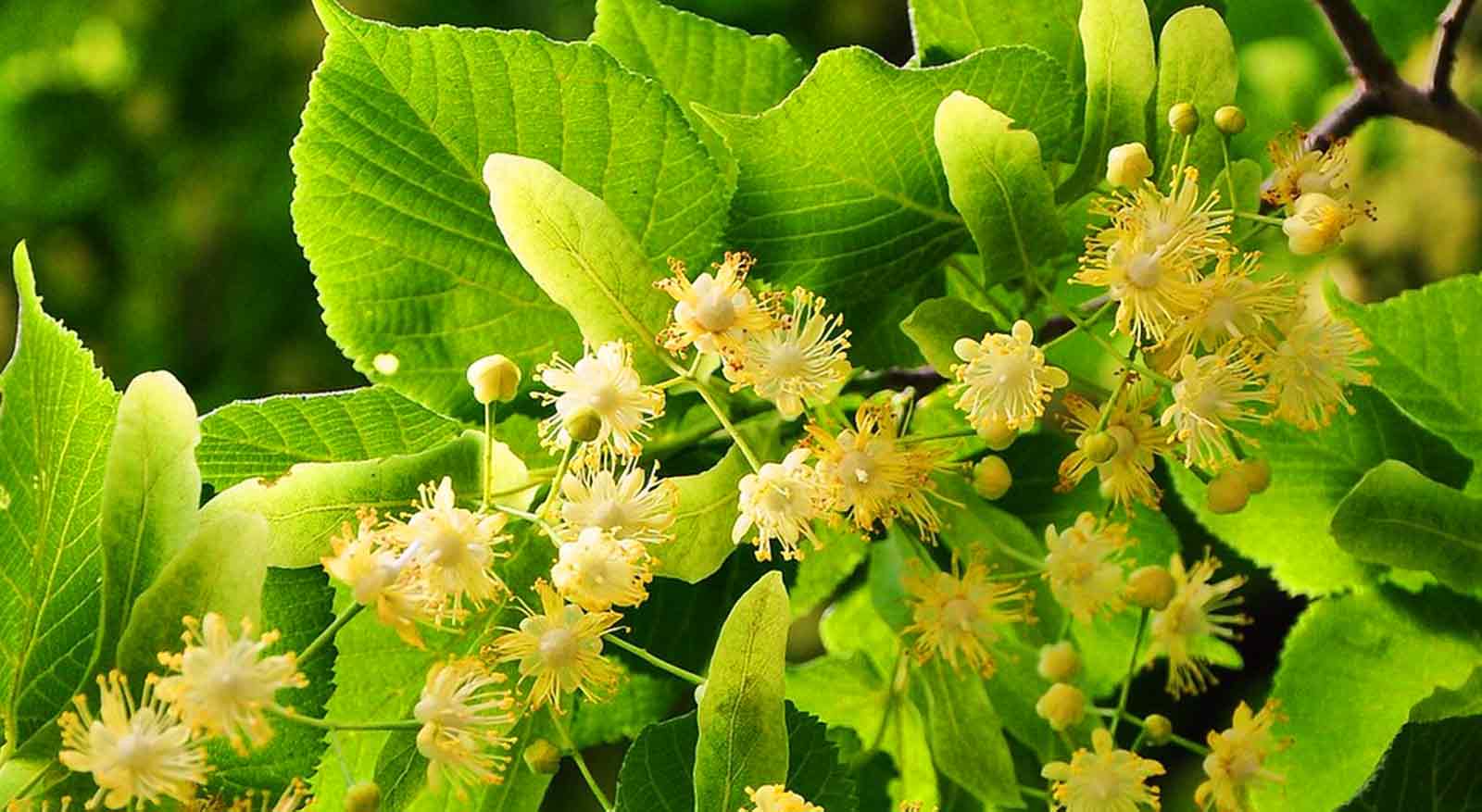
معرفی کلی عسل نمدار
بالا رفتن از این درخت بسیار سخت است. درختانی بسیار بلند و مرتفع و گلهایی جالب که غول شهد بوده و زنبورها آن شهد را به کندو میآوردند. شایسته است دستانمان را به نشانه شکرگذاری به آسمان بلند کنیم، برای خلقت این موجود ظریف و پاک. زنبور عسل شاهکار طبیعت، گلهای دور دست را برای ما دست یافتنی میکند. این عسل خاص و ارگانیک که در آن هیچ آلودگی یا سموم کشاورزی یافت نمیشود. معتقدم اگر ما آدم ها این هدیه گرانبهای طبیعت را خراب نکنیم، محصولی است شفابخش و فوقالعاده. عسل نمدار هدیهای است بی بدیل در دنیای شیرین عسلها. عسلی که زنان در دوره عادت به انرژیبخشی و بازیابی نیروی جسمانی میتوانند بر روی آن حساب باز کنند. عسلی که افراد پرتنش، برای آرام شدن، میتوانند مزه شیرین و نرم آن را تجربه کنند.
و اما این حس خوب بشر از این درخت و عسل ریشه در تاریخ تمدن بشری دارد. در اساطیر یونانی، درخت نمدار نماد باروری و زندگی جاودانه بود. این درخت اغلب در جشنها و مراسم مذهبی مورد استفاده قرار میگرفت، و مردم اغلب در اطراف آن میرقصیدند. در دوران معاصر، درخت نمدار همچنان یک نماد محبوب است و در خیابانهای بسیاری از کشورها از جمله ایالات متحده و اروپا کاشته شده است.
عسل تهیه شده از شهد این درختان به دلیل عطر و طعم منحصر به فرد آن بسیار ارزشمند است و از آنجا که نمیتوان این عسل را به دلیل تغییرات آب و هوایی و همچنین محدود بودن آن در جنگل به طور مستمر هر ساله تولید کرد، ارزش آن نیز بیشتر است. این عسل در ایالات متحده یکی از عسلهای گران است و هر کیلوگرم تا 26 دلار هم به فروش میرود.

درخت نمدار در اساطیر یونان و جهان
در یک روز آفتابی، یک زوج پیرمرد و پیرزن در خانه کوچکشان در فریگیه نشسته بودند. آنها فقیر بودند اما خوشحال. آنها همچنین عاشق درخت نمدار بودند که در حیاط خانه شان رشد میکرد. آنها هر روز برگهای آن را دم میکردند و عسل آن را میخوردند. آنها میگفتند که نمدار درخت سحر و جادو است که به آنها سلامتی و شادی میبخشد.
روزی، دو خدای اولمپوس، زئوس و هرمس ، به شکل دو مسافر فقیر به خانه شان آمدند. پیرزن و پیرمرد با دلسوزی و مهربانی از آنها استقبال کردند و بهترین چای نمدار و عسل را برایشان سرو کردند. خدایان از مهماننوازی آنها تحت تاثیر قرار گرفتند و تصمیم گرفتند که به آنها چیزی بدهند که همیشه خواسته اند: جاودانگی.
آنها به پیرزن و پیرمرد گفتند که هر چیزی را که دوست دارند، بخواهند. پیرزن و پیرمرد با هم نگاه کردند و گفتند: “ما فقط می خواهیم تا ابد با هم باشیم”. خدایان لبخند زده و گفتند: “پس اینطوره، باشه”. سپس دستهایشان را گرفتند و به سمت درخت نمدار رفتند. در همان لحظه ، پیرزن و پیرمرد تبدیل به دو درخت شگفت انگیز شدند: یک نمدار و یک بلوط. برگهایشان به هم پیوسته بود و شاخههایشان در هم تنیده. خدایان گفتند: “اینجور شما همیشه با هم خواهید ماند”. سپس خود را نشان دادند و به سوی کوه اولمپوس پرواز کردند.
این داستان تبلوری از اسطوره فاموس فائتوس و باکس است که در اسطورههای یونان باستان روایت شده است. نام فائتوس به معنای “روشن” است و نام باکس به معنای “بلوط” است. این دو درخت نشان دلدادگان عشق، صلح، صبر، اعتماد، احترام، تحسین، تشکر، تحمل، توجه و جاودانگی هستند. این درخت نماد ارزشهای انقلاب فرانسه در سال 1792 بود.
نمدار یک درخت با ارزش و معنادار است که در سراسر جهان پراکنده شده است. در آمریکا به آن باسوود می گویند ، در انگلستان و در اروپا و آسیا به آن لیمو می گویند. این درختان به جنس tilia تعلق دارند که شامل 30 گونه مختلف هستند. بیشترین تنوع گونه ای در آسیا دیده می شود. این درختان می توانند تا 40 متر بلند شوند و برگ های زیبای شکل قلب دارند. گل های آنها خوشبو و خوراکی هستند و عسل خوشمزه ای را تولید می کنند.
نمدار نقش مهمی در فرهنگ و تاریخ بشر داشته است. این درخت نماد ملی اسلوونی است و یک نماد عرفانی برای بسیاری از مذاهب و فرق است. نام شهرهای بسیاری در جهان حاوی کلمه linden یا lime است. این به این دلیل است که نمدار در مرکز روستاها و شهرها کاشته میشد و جایگاه اجتماعی و سیاسی داشت. نمدار همچنین نماد زندگی، سلامتی، عدالت، پیروزی و باروری بوده است.
گیاهشناسی درخت نمدار
برای شناخت بهتر خواص عسل نمدار، ابتدا به برخی ویژگیهای گیاهشناسی و دارویی این درخت اشاره میکنیم.
درخت نمدار یک درخت خزان کننده است که در خانواده پنیرکیان قرار دارد. این درخت سریع رشد میکند و ارتفاعش بستگی به گونه دارد: از 15 تا 40 متر. این درخت بزرگ و زیبا برای توسعه نیاز به فضای کافی دارد.
در اروپا، دو گونه بومی آن وجود دارد: آهک برگ کوچک (Tilia cordata ) و آهک برگ بزرگ (Tilia platyphyllos). در فرانسه، این درخت به طور طبیعی در مناطق دشت و تپه، به خصوص در آلزاس و لورن پیدا میشود. در ایران هم این درخت در کوههای البرز رشد میکند.
درخت نمدار قبلا در تیره تیلیاسه(Tiliaceae) دستهبندی میشد ولی پژوهشهای جدید نشان داد که باید در تیره پنیرکیان جای بگیرد. این درخت در جنگلهای شمال ایران پراکنده است، چوبش نرم، راست، و سبک است. این درخت استفاده صنعتی گستردهای نیز برای ساخت در و پنجرههای چوبی دارد. میتوان آن را ورق کرد و وزن مخصوص آن 0/52 است، رگهای ندارد. رنگش صورتی روشن یا کدر است و بافتش ریز است.
مشخصات برگهای درخت نمدار
درازای برگهای قلبی شکل درخت نمدار، میتواند از شش تا بیست سانتیمتر باشد. برگ درخت نمدار برای دام بسیار مفید است. درخت نمدار سرعت رشد زیادی داشته و در شرایط محیطی مناسب در مدت سه سال به درختی تنومند تبدیل میشود.
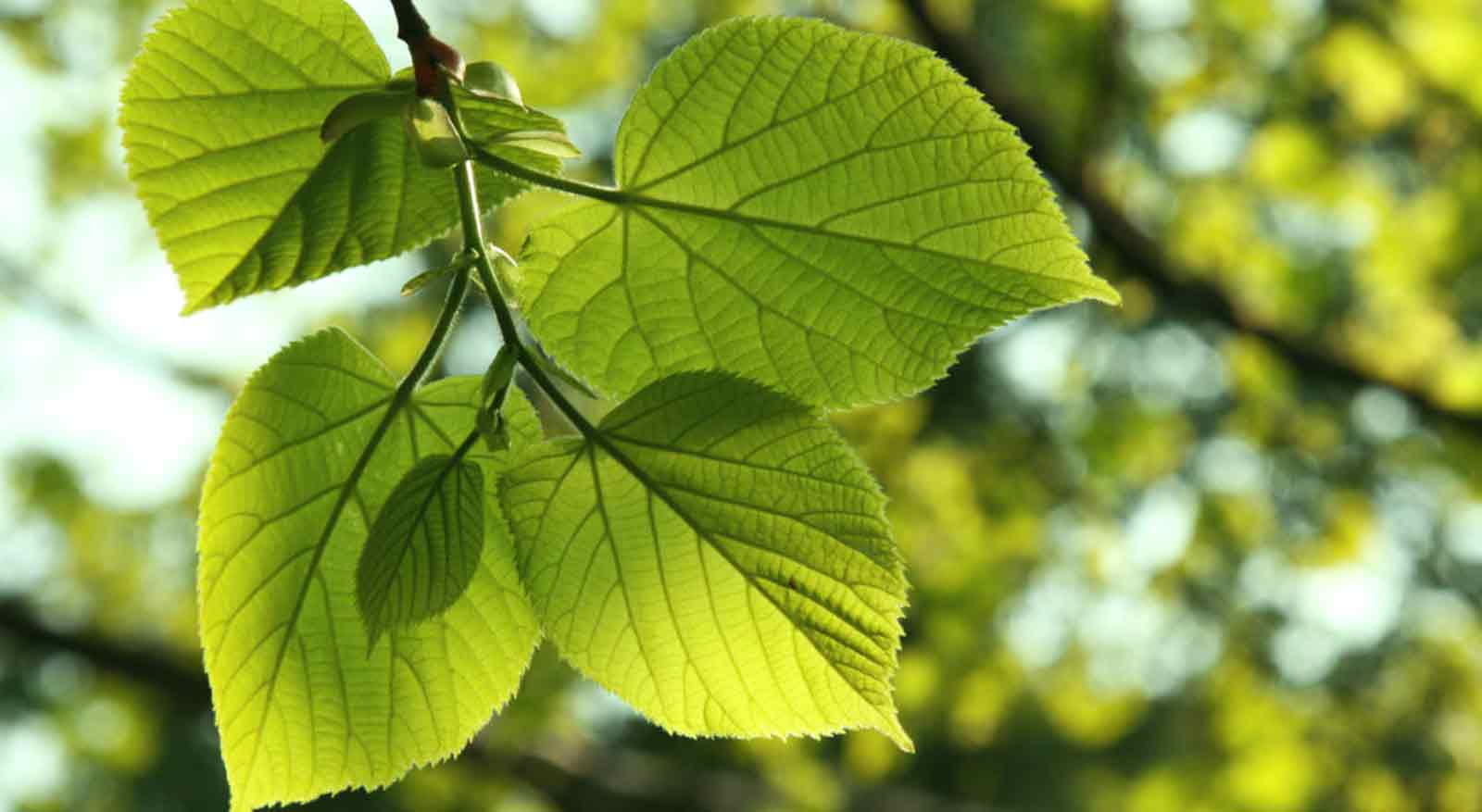
گل و شهد نمدار
گلهای درخت نمدار همزمان بخش مادگی و بخش نرینگی دارند و فرآیند گردهافشانی، توسط حشرات انجام میشود.
گلهای نمدار چشماندازی زیبا و خوشبو را ایجاد میکنند. اما آنها فقط برای انسانها جذاب نیستند. حشرات گردهافشان هم عاشق آنها هستند. به ویژه زنبورها از گلهای نمدار نمیتوانند دست بکشند. آنها با شور و شوق به گلهای نمدار پرواز میکنند و گرده و شهد آنها را جمع میکنند. گرده و شهد نمدار برای تغذیه و تولید عسل زنبورها بسیار مفید است.
اما نمدار برای همهی زنبورها دوستانه نیست. بعضی از گونههای نمدار مواد سمی تولید میکنند که برای زنبورها خطرناک است. این مواد سمی باعث مرگ زنبورهایی میشود که به گلهای این درختان خاص میرسند. این پدیده در چند گونه از نمدار دیده میشود که برگهای سفید نقرهای دارند. علت دقیق این سمیت هنوز مشخص نشده است. ولی نمدارهای ایران برای زنبور بسیار گوارا و جذاب است.

پس نمدار چقدر جالب است! این درخت باعث شده است که حشرات گردهافشان با او رابطه داشته باشند. گلهای نمدار بعضی از زنبورها را جذب میکند و بعضی دیگر را دفع میکند. شیره برگهای نمدار هم منبع دیگر عسل برای زنبورها است. نمدار درخت عجایب است که با حشرات در تعامل است.
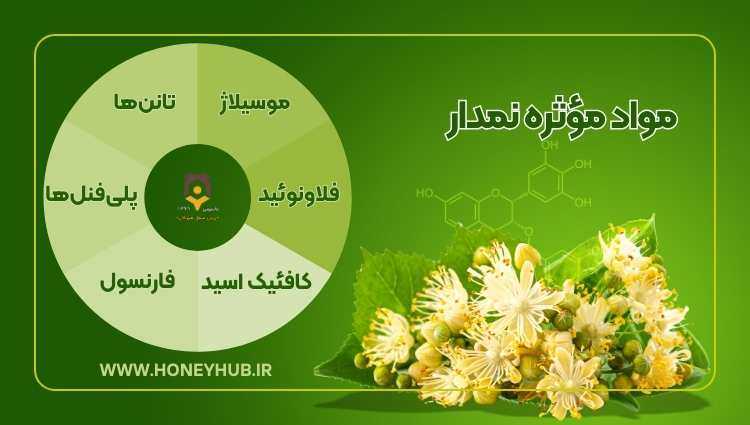
خواص شگفتانگیز نمدار
نمدار یک درخت زیبا و مفید است که در سراسر جهان پراکنده شده است. اما آیا می دانید که نمدار حاوی مواد فعال گیاهی است که برای سلامتی بشر مفید هستند؟ در این بخش به بررسی برخی از این مواد و خواص آنها می پردازیم.
این مواد رنگدانه های گیاهی هستند که دارای خواص آنتی اکسیدان هستند که با مقابله با رادیکالهای آزاد، پیری سلول ها را کاهش میدهند. فلاونوئیدهای نمدار شامل کوئرستین و کامفرول هستند که به تقویت سیستم ایمنی، کاهش التهاب و پیشگیری از برخی بیماریهای قلبی عروقی و سرطان کمک میکنند .
مادهای گیاهی است که حاوی فیبرهای محلول در آب است. این فیبرها با تشکیل ژل در دستگاه گوارش، به تعادل بخشیدن به حرکت روده و جذب آب و الکترولیتها کمک میکنند. موسیلاژ نمدار نقش مفیدی در درمان یبوست، اسهال، التهابات روده و سندروم روده تحریک پذیر دارد.
این مواد فنل هستند. تاننها نقش آنتی اکسیدان، ضد باکتری، ضد قارچ، ضد وروس و ضد التهاب دارند. تاننهای نمدار همچنین خواص قابض دارند و به تضعیف عاملهای عفونت زای روده و تسکین علائم ناراحت شدگان گوارش کمک میکنند.
این مواد فعال گیاهی هستند که دارای خصوصیات دارویی گسترده ای هستند. آنها با کنترل سطح کلسترول، فشار خون، خطر ابتلا به بیماریهای قلبی و مغزی و التهاب در بدن، به سلامتی ما کمک میکنند. پلیفنولهای نمدار شامل کافئیک اسید، کلروژنیک اسید، پروسیانیدینها و رزمارینیک اسید هستند.
این ماده یک پلیفنول است که در بسیاری از گیاهان یافت میشود. کافئیک اسید دارای خواص آنتی اکسیدانی، ضد التهاب، ضد باکتری، ضد قارچ و ضد وروس است. کافئیک اسید نمدار به حفاظت از سلولها در برابر استرس اکسیداتیو که منجر به پیری و بیماری میشود، کمک میکند.
این ماده یک الکل ترپنوئید است که در برخی گلها و گیاهان دارویی یافت میشود. این ماده دارای رایحه خوشایند و خواص ضد باکتری، ضد قارچ، ضد التهاب و ضد درد است. اسانس فارنسول نمدار به تقویت سلامت پوست، مو، دهان و حلق کمک میکند.
با بررسیهای علمی، مشخص شده است که نمدار گنجینهای از مواد فعال گیاهی است که برای سلامتی بشر مفید هستند. نمدار به عنوان چای، عصاره، عسل، روغن و دارو استفاده می شود. نمدار درخت شفابخش است که باعث بهبود بسیاری از مشکلات جسمانی و روحی ما میشود.
خواص درمانی گلهای نمدار
از گلهای نمدار برای درمان بیماریها و مشکلات زیر استفاده می شود.
- سرماخوردگی، دود دادن، سرفه، تب و سایر اختلالات دستگاه تنفسی
- عفونت
- التهاب
- فشار خون بالا
- سردرد (به ویژه میگرن)
- ادرار آور (تولید ادرار را افزایش میدهد)
- ضد اسپاسم (اسپاسم عضلات صاف را در طول دستگاه گوارش کاهش می دهد)
- آرامبخش
- محافظت از کبد
از گونههای دوگل برای ساخت عطر هم استفاده میشود.

برای خرید عسل شفابخش نمدار همین الان اقدام کن. خیلی ساده است روی دکمه زیر کلیک کن

خواص چوب نمدار
چوب نمدار برای درمان موارد زیر استفاده می شود:
- اختلالات کبد و کیسه صفرا
- سلولیت (التهاب پوست و بافت نرم )
- ادم یا زخم های پایین پا.
- اختلالات روده ای (خوردن چوبی که تا ذغال سوخته شده است)
عسل نمدار
برای هزاران سال، عسل نمدار دارای بیشترین استقبال از عسل بوده است. رایحه گلهای ریز و سفید زرد آن درختان عظیمی که در اواخر بهار یا اوایل تابستان شکوفا می شوند ، همیشه انسان ها و همچنین زنبورهای عسل را به خود جلب کرده است.
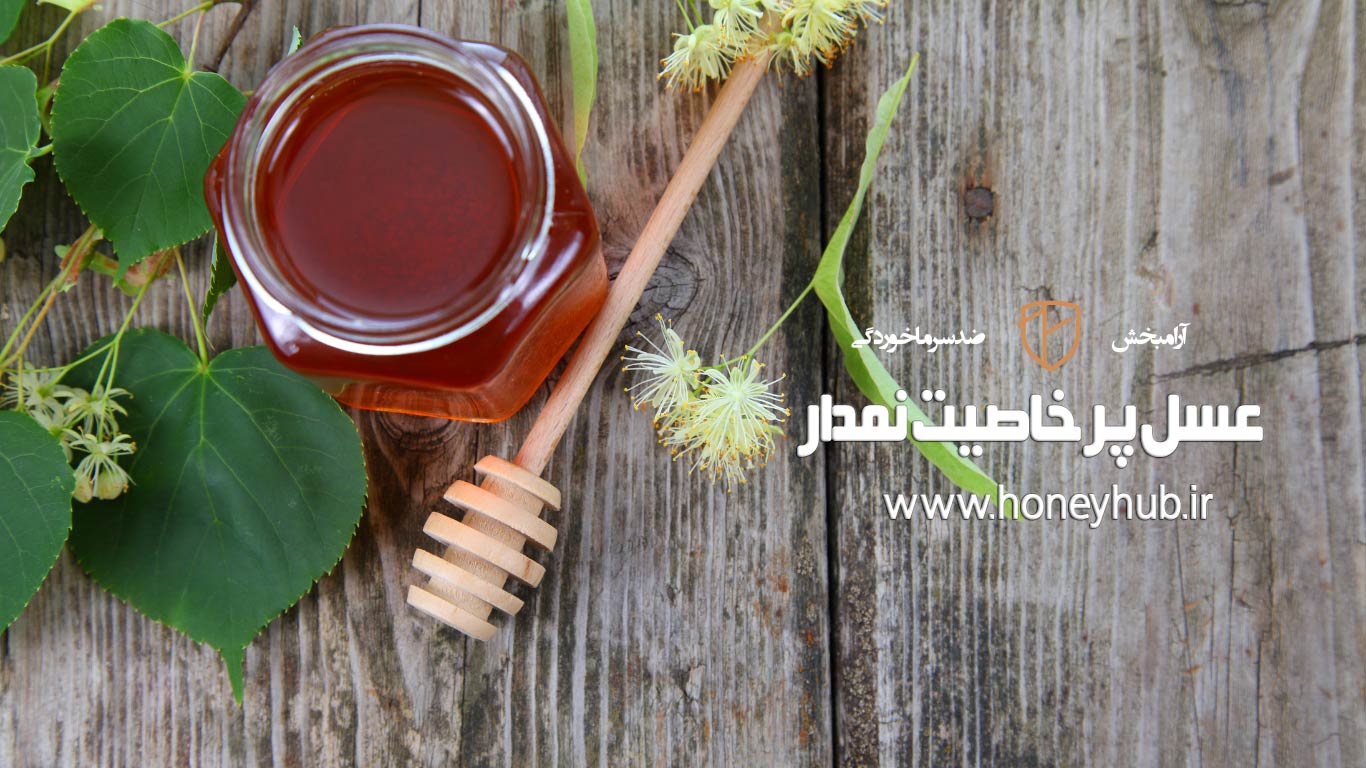
عسل نمدار چگونه تولید میشود؟
لحظهای که زنبور عسل شهد گل را جمعآوری میکند، با آنزیمی در دهان زنبور مخلوط میشود. این آنزیم به نام اینورتاز یا "آنزیم زنبور عسل" معروف است که از غدد زنبور ترشح میشود.
هنگامی که زنبورهای عسل با شهد به کندو باز میگردند، شهد نمدار را که خود جمع آوری کردهاند را فرآوری میکنند و شهد را با "آنزیم زنبور" مخلوط میکنند. این باعث کاهش محتوای آب تبدیل شهد به عسل میشود. سپس آنها عسل گلها را در سلولهای مومی قرار میدهند، اما در این مرحله، محتوای آب ممکن است خیلی زیاد باشد. در این بخش، زنبورهای مقیم کندو، شهد را نوشیده و دوباره آن را غلیظ تر کرده و دوباره آنزیم زنبور را به آن ترشح میکنند.
برای کاهش محتوای آب، زنبورهای عسل بالهای خود را در بالای سلول مومی تکان میدهند، این امر به نوبه خود بخشی از آب را تبخیر میکند. پس از اتمام فرآیند، عسل نمدار حدود 20-23 درصد رطوبت خواهد داشت. سپس روی سلول با لایه نازکی موم بسته میشود و زنبورهای عسل این روند را دوباره تکرار میکنند. عسل برخی از مناطق آب کمتری دارد و ممکن است تا 15 تا 17 درصد رطوبت داشته باشد و لیکن عسل مناطق مرطوب و جنگلی معمولا 20 تا 24 درصد هم ممکن است رطوبت با منشاء شهد و نکتار گلها داشته باشد.
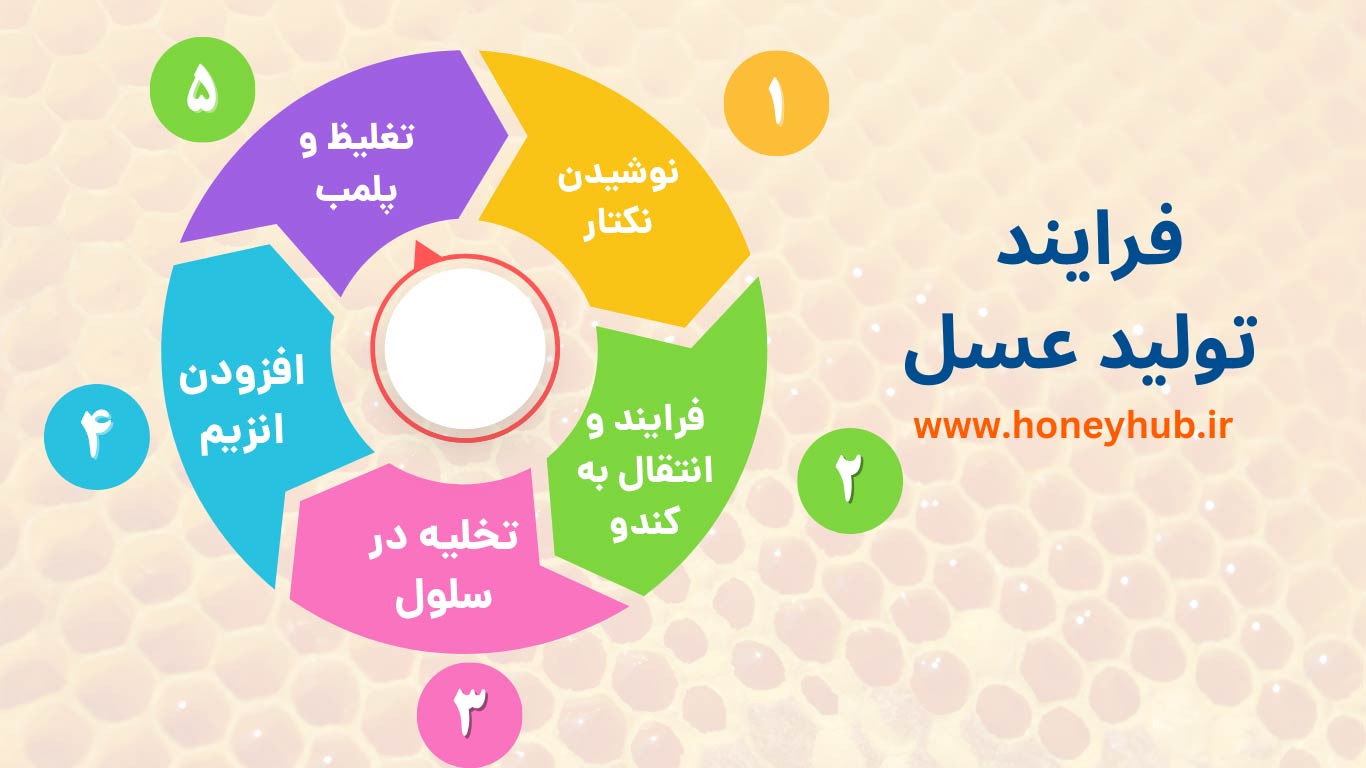
چالشهای تولید عسل نمدار
برای زنبوردارانی که عسل نمدار تولید و عرضه میکنند، هر فصل در مورد محصول خود دچار عدم اطمینان هستند. اگرچه درختان نمدار پتانسیل فوقالعاده ای برای تولید مقدار زیادی عسل دارند، اما آب و هوا اغلب میتواند مانع رسیدن به این هدف شود.
در حالی که گلها معمولاً در طول یک دوره سه هفتهای شکوفا میشوند، تغییر آب و هوا میتواند زمان شکوفه را تنها به دو روز کاهش دهد. همچنین ممکن است باران شدید شهد را شستشو دهد زیرا گلها بسیار ظریف هستند و در هنگام بارندگی شدید مستعد ریزش هستند.
علاوه بر این، تولید بذر میتواند آسیب ببیند یا از بین برود، هر سه تا چهار سال، یکبار این اتفاق میافتد. یک زنبوردار معمولاً تنها دو تا سه سال از پنج سال میتواند روی محصول عسل خوب نمدار حساب کند.
یکی از چالشهای دیگر در برخی مناطق نمدارخیز رقابت در استقرار کندوها رقابت است. در این بین، رعایت صبر و مهربانی یکی از نکات مهمی است که زنبورداران محترم باید رعایت کنند. هر چند رعایت حق تقدم در قانون مصوب مجلس هم تصریح شده و لیکن با مهربانی میتوان عسل بیشتری از برخی از مناطق برداشت کرد.
مشخصات فیزیکی عسل نمدار
عسل نمدار برداشت شده توسط هانیهاب دارای رنگ زرد کم رنگ است. رایحه آن گیرا است. طعم آن قدرتمند است، این طعم ما را به یاد بوی گل با نتهای منتول و بالزامیک میاندازد. تبلور آن آهسته با دانهبندی ریز است. مصرف آن به صورت دم کرده یا به سادگی به صورت ساندویچ یا با کره یا خامه یا ارده توصیه میشود.
- رنگ: سفید تا زرد کمرنگ یا مایل به سبز. اگرچه یک قانون می گوید که هرچه عسل تیره تر باشد، میزان اشباع آن بیشتر است ، اما این امر در مورد عسل نمدار صدق نمی کند. رنگ سفید آن تغییر نمی کند ، مگر در مواردی که متبلور باشد.
- مزه و رایحه: چوبی تازه همراه با رایحه ای از نعناع ، بالزامیک و کافور.رایحه: عسل رسیده بسیار نرم و کاملاً معطر است.
- طعم: شیرین ، گاهی اوقات با تلخی. بعد از آن همیشه می توانید طعم مزه مداوم و قابض سبک داشته باشید. این یک شیرین ترین عسل است ، به اندازه شیرین عسل هدر.
خواص شفابخش عسل نمدار
عسل نمدار کاربرد شناخته شده ای برای درمان اختلالات بی خوابی دارد. فلاونوئیدها و فارنسول مسئول اثر آرام بخش این نوع عسل هستند. این ترکیبات روی گیرنده های مغز مسئول خواب اثر می گذارند. همچنین حاوی عناصر کمیاب از جمله پتاسیم، کلسیم و منگنز است.
ترکیب شیمیایی عسل نمدار
درست مثل همه عسل ها ، حداکثر 20٪ آب و نسبت تقریباً برابر فروکتوز و گلوکز دارد. با این حال ، برای دانشمندان این یک رمز و راز است. که با توجه به اینکه عسل نمدار حدود 400 ماده و ترکیب دارد قابل درک است.
از ویژگی های متمایز آن:
عسل لیندن سرشار از مالتوز است، حاوی حدود 6-8٪ از آن است که در طی رسیدن محصول تشکیل میشود. این به آن اثر مفیدی بر سیستم هضم می دهد.
عسل نمدار در مقایسه با سایر عسلها دارای ویتامین بیشتری است، به ویژه ویتامین گروه ب مثل (B1 ، B2 ، B5 ، B6)، اسید نیکوتینیک، ویتامین H (بیوتین) ویتامین PP (نیاسین)، ویتامین C ، توکوفرول. در ترکیب با سایر مواد موجود در عسل ، فواید درمانی زیادی برای سلامتی ما دارد.
بیش از 40 ماده مغذی مختلف خرد، مانند پتاسیم، کلسیم، گوگرد، مس، ید، آلومینیوم، نیکل، فسفر، کلر، منیزیم، منگنز، روی، کبالت و غیره. نکته جالب مواد معدنی دقیقاً در همان غلظت خون انسان قرار دارند که باعث جذب سریع آنها توسط بدن می شود.
نمدار دارای اسیدهای گلوکونیک، سیتریک، لاکتیک، مالیک، اسید تارتاریک، اسید لینولنیک، اسید اگزالیک، اسید سوکسینیک، اسید کلریدریک و فسفریک است.
استفاده درمانی از عسل نمدار
از گلهای نمدار به طور گستردهای در گیاه درمانی به عنوان جوشانده یا چای استفاده میشود. بنابراین منطقی است که عسل آن به شکلی مشابه فقط به روشی متمرکز عمل بکند. علاوه بر آنچه گلها انجام میدهند ، آنزیمهای زنبورهای عسل کل محصول را به داروی خالص تبدیل میکنند.استفاده منظم از عسل نمدار به حفظ فشار اسمزی کافی در سطح سلولی کمک میکند ، سوخت و ساز بدن را عادی میکند، اثرات مفیدی بر هضم و فعالیت هورمونی دارد.
درمان بیماریهای تنفسی
عسل نمدار به دلیل خاصیت ضد باکتریایی و ضدالتهابیاش تسکین دهنده گلو از التهاب لوزه جلوگیری کرده و التهاب اندامهای تنفسی را کنترل میکند. ترشح بلغم از بینی و گلو را تسهیل میکند. عسل با آب لیمو پیشگیری خوبی در برابر بیماری حاد تنفسی است.
ضدسرماخوردگی و آنفلوانزا
- برای سرماخوردگی: یک قاشق چای خوری سه بار در روز ، یک ساعت قبل از غذا میل شود.
- برای سرماخوردگی شدید: اول: در رختخواب بمانید! سپس سه بار در روز عسل نمدار مصرف کنید ، محلول 30٪ عسل نمدار را در آب تازه چغندر قرمز به بینی تزریق کنید ، 5 تا 6 قطره در هر سوراخ بینی.
یک داروی خانگی که از ۵ برگ کوبیده شده آلوئهورا، یک قاشق غذاخوری عسل نمدار، دو عدد زرده تخممرغ و یک لیوان شربت بهار نارنج یا آب گرم تهیه میشود. برخی دیگر دستور متفاوتی ارائه میدهند: ترکیبی از پاستیل عسل نمدار، آرد، خردل و روغن آفتابگردان. تمامی مواد باید با هم مخلوط شده و قبل از خواب به صورت یک گلوله روی سینه قرار داده شود.
عسل نمدار خاصیت تعریقزا دارد، بنابراین پس از مصرف آن بهتر است از خانه خارج نشوید.
آرامبخش طبیعی
برای کسانی که از استرس و اضطراب رنج میبرند، عسل نمدار با ایجاد آرامش درونی و کمک به خواب راحت میتواند یک انتخاب عالی باشد. به ویژه برای بانوان در دوره عادت یا پیشایائسگی به همراه گرده گل، معجزه وار عمل میکند.
تقویتکننده سیستم ایمنی
مواد مغذی موجود در عسل نمدار، قدرت بدن را در مقابله با بیماریها افزایش میدهد. این عسل حاوی ویتامینها و آنتیاکسیدانهای قدرتمند است.
تسریع در درمان زخمها
خاصیت ضدباکتریایی قوی عسل نمدار، آن را به یک مرهم طبیعی برای بهبود زخمها و التیام پوست تبدیل کرده است.
درمان مشکلات دستگاه گوارش
یک قاشق غذاخوری عسل نمدار، محلول در آب ولرم، سه بار در روز برای مدت زمان طولانی. این باعث افزایش بیش از حد ترشح اسید کلریدریک در معده (به شکل گرما) می شود یا برعکس ، باعث افزایش آن می شود (در حالت سرد). به طور گسترده ای در ترکیب با جوشانده آب کلم تازه ، کره سنتی، هسته دار استفاده می شود .
یک فنجان چای با عسل نمدار نیز در درمان کبد و کیسه صفرا مفید است.این دارای اثرات ادرار آور و ملین است که آن را در سم زدایی نیز خوب می کند.
رفع مشکلات چشم
عسل نمدار حاوی موادی است که برای شبکیه چشم مفید است. همه کاربران کامپیوتر باید آن را با اعتماد بخورند!
چشم درد را می توان با محلول این عسل شست.
انرژی زا و افزایش دهنده قوای جنسی
مصرف عسل نمدار انرژی مورد نیاز روزانه بدن را به طور طبیعی تأمین کرده و خستگی را برطرف میکند.
جدول خواص عسل نمدار
| خواص درمانی | توضیحات |
|---|---|
| التیام زخم ها و سوختگی ها | اثرات مثبت استفاده عسل خام بر زخم ها و سوختگی ها گزارش شده است. |
| کاهش مدت زمان اسهال | طبق گزارشات NCBI ، مصرف عسل خام باعث کاهش شدت و مدت اسهال می شود. |
| جلوگیری از ریفلاکس اسیدمعده | تحقیقات نشان داده است که بدن با پوشاندن عسل به مری و معده ، می تواند جریان رو به بالا غذای هضم نشده و اسید معده را کاهش دهد. |
| مبارزه با عفونت ها | دانشمندان در سال 2010 گزارش کردند که عسل از طریق پروتئین خود (defensin-1) توانایی از بین بردن باکتری ها را دارد. |
| تسکین علائم سرماخوردگی و سرفه | ثابت شده است که عسل در تسکین علائم سرماخوردگی و سرفه مفید است. سازمان بهداشت جهانی در واقع عسل را به عنوان یک درمان طبیعی سرفه توصیه می کند. |
| سرشار از آنتی اکسیدان | عسل خام با کیفیت بالا حاوی بسیاری از آنتی اکسیدان های مفید است. اینها شامل ترکیبات فنلی مانند فلاونوئیدها و اسیدهای آلی است. |
| کاهش تری گلیسرید بالای خون | تری گلیسیریدها با مقاومت به انسولین مرتبط هستند و محرک اصلی دیابت نوع 2 هستند. مطالعات متعدد مصرف منظم عسل را با سطح تری گلیسیرید پایین تر، به ویژه هنگامی که از آن برای جایگزینی قند استفاده می شود، مرتبط کرده است. |
این بر اساس عسل خام است. عسل تصفیه شده یا پاستوریزه این فواید را تجزیه و کاهش می دهد.
موارد منع مصرف
- عسل نمدار را نباید افرادی که نارسایی حاد قلبی دارند، و یا جراحی دریچه قلب انجام دادهاند، یا از خونریزی ریوی رنج میبرند، مصرف کنند.
- زنان باردار، به ویژه نزدیک زایمان، زیرا ترکیبات موجود در عسل خون را رقیق میکند و خطر خونریزی پس از زایمان را افزایش میدهد.
- افراد مبتلا به کم خونی، زیرا مانع جذب آهن میشود
- رانندگان، زیرا خاصیت قرص خواب آور دارد و میتواند خواب آلودگی ایجاد کند.
ما صادقانه همه چیز را با شما در میان میگذاریم. ما به آیین زنبور عسل که پاک میخورد و پاک تولید میکند وفادار هستیم.
با حمایت از هانیهاب، ما را در راه تولید عسل طبیعی یاری کنید.
عسل نمدار یک عسل نرم و فوقالعاده آرامبخش برای سلامتی شما
سوالات پر تکرار
سوالاتی که به صورت تلفنی یا حضوری از ما پرسیدهاید.
با توجه به گزارش مشتریان ما، آرامبخش بودن عسل نمدار، مهمترین ویژگی گزارش شده این عسل است.
به عنوان یک قانون کلی اگر عسل برای مدتی ذخیره شود رنگ آن تیره تر می شود.
به عنوان یک قانون کلی اگر عسل برای مدتی ذخیره شود رنگ آن تیرهتر میشود. اما گاهی زنبور تنها از شهد نمدار استفاده نمیکند و از شهد سایر گیاهان جنگلی هم استفاده میکند. در این مواقع ممکن است رنگ عسل تیرهتر باشد. اما عسل طبیعی است.
با توجه به اینکه عسل نمدار در مناطق شمالی تولید می شود، زنبور عسل نمیتواند خیلی رطوبت شهد را کمتر کند. به همین دلیل عسل نمدار آبکی تر از عسلهای مناطق خشک است و به همین دلیل با باز کردن درب عسل، اسیدی می شود. اما خواص آن حفظ میشود.
بله، تمام عسلهای طبیعی بعد از مدتی رس می بندند.
زمانی که عسل نمدار رس گیری نشده یا در دمای پایین نگهداری شود زودتر رس می بنند.
ممولا اگر عسل خوب صاف شود بعد از 9تا 11 ماه بعد عسل نمدار رس میبندد. اما در حالت معمول که زنبورداران عسل نمدار را به دلیل خواص خوب گرده و ذرات موم خیلی صاف نمیکنند بعد از 4 تا 6 ماه عسل نمدار رس میبندد.
اگر بیش از 11 ماه عسل نمدار دارید و هنوز رس نبسته است!
عسل نمدار به رنگ زرد متمایل به سبز است. اگر در مناطق جنگلی به همراه سایر درختان باشد رنگ قرمز می گیرد. یعنی عسل خالص نمدار نیست. هر چند عسل طبیعی است ولی نمدار خالص نیست. اگر رنگ عسل شما تیره بودید عسل نمدار شما تازه نیست.
خیر، برخی عسلها بسته به نوع گل و شهد گل یا گرده گل، رنگ تیره دارند. فقط در عسل نمدار عسل تیره نشانه عمر بالاتر عسل است.
اول این که ما زنبورداریم، دوم این که ما عسل تولید می کنیم نه چیز دیگر! سوم اینکه ما منصف هستیم و سفارش شما را با قیمت مناسب به هر جای ایران ارسال میکنیم.
Leave a comment
Log in to post comments
Comments
من آلرژی فصلی دارم می تونم این عسلو مصرف کنم؟
By: لاله احمدی On 2025-03-17Rating:★★★★★ (5.0)من حساسیت بهاره دارم و به گرده حساسیت دارم آیا این عسلو می تونم مصرف کنم؟
Replied by: Somayyeh Amini On 2025-03-17 درود کاربر گرامی
عسل نمدار به دلیل داشتن ترکیبات طبیعی و آنتیاکسیدانها،
میتواند برای برخی افراد مبتلا به آلرژی مفید باشد. عسل حاوی مقادیر کمی از گرده گلها است که ممکن است به بدن کمک کند تا به تدریج به این مواد آلرژن عادت کند و واکنشهای آلرژیک را کاهش دهد. با این حال، اثربخشی عسل نمدار در بهبود آلرژی بستگی به نوع آلرژی و شرایط فرد دارد.
برای شروع، مقدار کمی از عسل نمدار را مصرف کنید اگر علائم آلرژی مشاهده نشد می توانید با خیال راحت از این عسل پر خاصیت استفاده کنید.علت نرم بودن؟
By: مینا صالحی On 2023-10-03Rating:★★★★★ (5.0)من از خواندن متن شما خیلی استفاده کردم. لطفا به من بگویید چرا این عسل نرم است؟
Replied by: Somayyeh Amini On 2023-10-03 عسل نمدار به دلیل داشتن میزان بالای قند مالتوز نسبت به ساکارز نرم است. قند مالتوز یک قند دوتایی است که از دو مولکول گلوکز تشکیل شده است. این قند به دلیل ساختار مولکولی خود، به راحتی کریستال نمی شود و باعث می شود که عسل نمدار نرم و روان باشد.
علاوه بر قند مالتوز، عسل نمدار حاوی مقادیر بالایی از ساکارز، فروکتوز و سایر قندها است. این قندها نیز به نرم شدن عسل نمدار کمک می کنند.
ترکیب عسل نمدار به شرح زیر است:
قند مالتوز: 50-60%
ساکارز: 30-40%
فروکتوز: 10-20%
عسل نمدار همچنین حاوی مقادیر کمی از ویتامین ها، مواد معدنی و آنتی اکسیدان ها است.
Related posts
 خواص شگفتانگیز گرده گل برای بهبود سلامت: چرا باید آن را امتحان کنید؟
خواص شگفتانگیز گرده گل برای بهبود سلامت: چرا باید آن را امتحان کنید؟ روشهای مصرف گرده گل
روشهای مصرف گرده گل

















آخرین نظرات